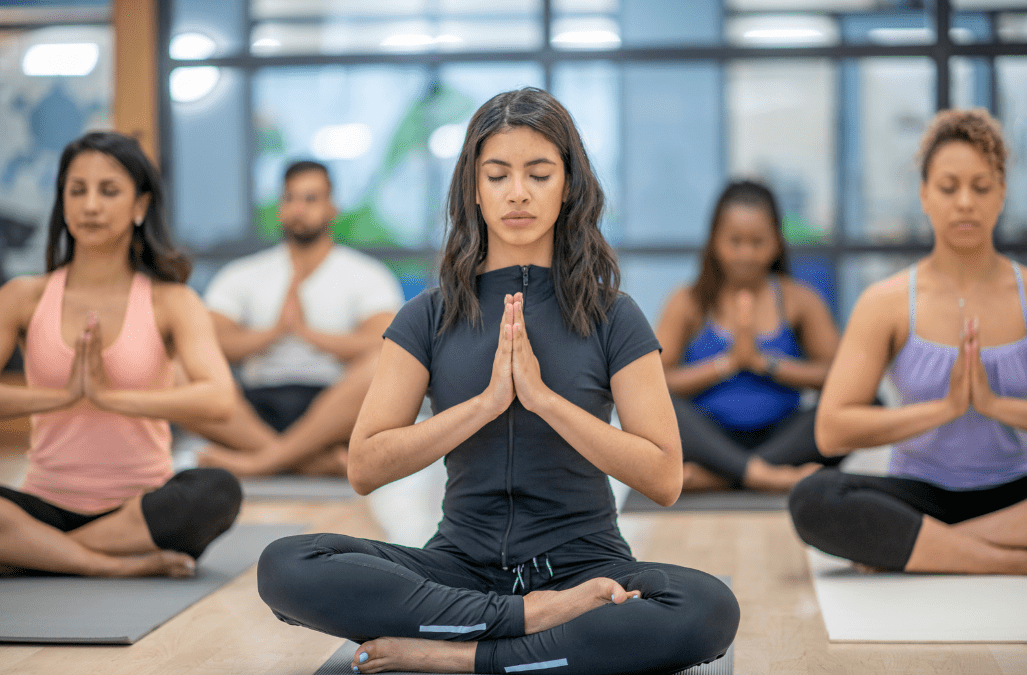Back pain is a common issue that can result from poor posture, long hours of sitting, or physical strain. Practicing yoga can be an effective way to relieve back pain, as it stretches and strengthens the muscles while promoting flexibility and relaxation. Here are some gentle, beginner-friendly yoga poses that target the back to help reduce pain and improve mobility.
Cat-Cow Stretch (Marjaryasana-Bitilasana)
The Cat-Cow stretch is a gentle flow between two poses that warms up the spine and increases flexibility. This stretch can release tension in the lower back and improve posture.
- How to Do It: Start on your hands and knees, with wrists directly under shoulders and knees under hips. Inhale, arch your back and look up (Cow Pose). Exhale, round your spine and tuck your chin to your chest (Cat Pose). Repeat for 5-10 breaths.
- Keywords: Cat-Cow stretch, spine, flexibility, lower back, tension, posture, gentle, arch, round, breaths.
Child’s Pose (Balasana)
Child’s Pose is a relaxing pose that stretches the lower back, hips, and thighs. It gently decompresses the spine and allows for a deep stretch, relieving lower back pain.
- How to Do It: Kneel on the floor with your big toes touching and knees spread wide. Sit back on your heels and reach your arms forward, lowering your forehead to the mat. Hold for 5-10 breaths, breathing deeply into your back.
- Keywords: Child’s Pose, lower back, hips, thighs, decompress, spine, stretch, pain relief, relaxation, breathing.
Downward-Facing Dog (Adho Mukha Svanasana)
Downward-Facing Dog stretches and strengthens the entire back, along with the hamstrings and calves. This pose lengthens the spine and releases tension in the back and shoulders.
- How to Do It: Start on your hands and knees, then lift your hips toward the ceiling to form an inverted “V” shape. Keep your hands shoulder-width apart, and press your heels down. Hold for 5-7 breaths.
- Keywords: Downward-Facing Dog, back, spine, stretch, hamstrings, calves, tension, shoulders, inverted, lengthen.
Cobra Pose (Bhujangasana)
Cobra Pose gently stretches the lower back and strengthens the upper back. It opens up the chest, improving flexibility in the spine and alleviating tension in the lower back.
- How to Do It: Lie on your stomach with your hands under your shoulders. Press into your hands and lift your chest off the mat, keeping your elbows close to your body. Hold for 5-8 breaths, breathing deeply.
- Keywords: Cobra Pose, lower back, upper back, chest, spine, tension, flexibility, stretch, lift, breathing.
Bridge Pose (Setu Bandhasana)
Bridge Pose strengthens the lower back and glutes while stretching the chest, neck, and spine. It can help relieve tension in the lower back and improve posture by strengthening the core and back muscles.
- How to Do It: Lie on your back with your knees bent and feet hip-width apart. Press your feet into the mat and lift your hips toward the ceiling, interlacing your hands under your back if comfortable. Hold for 5-10 breaths.
- Keywords: Bridge Pose, lower back, glutes, chest, neck, spine, tension, posture, strength, core.
Sphinx Pose (Salamba Bhujangasana)
The Sphinx Pose is a gentle backbend that provides a mild stretch to the lower back while supporting the spine. It’s ideal for those with sensitive lower backs, as it doesn’t require too much strain.
- How to Do It: Lie on your stomach with your elbows under your shoulders and forearms on the floor. Gently lift your chest and look forward, keeping your pelvis on the mat. Hold for 5-8 breaths, breathing into your back.
- Keywords: Sphinx Pose, backbend, lower back, spine, gentle, stretch, support, sensitive, chest, breathing.
Reclining Spinal Twist (Supta Matsyendrasana)
Reclining Spinal Twist releases tension in the lower back and hips, improving flexibility and relieving stiffness. This gentle twist helps loosen tight muscles around the spine.
- How to Do It: Lie on your back with your arms extended in a T-shape. Bring one knee toward your chest, then gently lower it across your body, keeping your shoulders on the floor. Hold for 5-10 breaths on each side.
- Keywords: Reclining Spinal Twist, lower back, hips, flexibility, tension, stiffness, twist, spine, release, stretch.
Seated Forward Bend (Paschimottanasana)
Seated Forward Bend stretches the spine, hamstrings, and lower back, promoting relaxation and reducing tension. This pose is especially helpful for releasing tightness in the lower back.
- How to Do It: Sit with your legs extended in front of you. Inhale to lengthen your spine, then exhale as you reach forward toward your feet, keeping your back straight. Hold for 5-8 breaths.
- Keywords: Seated Forward Bend, spine, hamstrings, lower back, relaxation, tension, reach, lengthen, stretch, breathing.
Pigeon Pose (Eka Pada Rajakapotasana)
Pigeon Pose is a deep hip opener that also stretches the lower back. Tight hips can contribute to back pain, so this pose helps release hip tension and alleviate discomfort in the lower back.
- How to Do It: Begin in a tabletop position, bring one knee forward and extend the opposite leg back. Lower your hips toward the floor and rest your forearms on the mat. Hold for 5-10 breaths on each side.
- Keywords: Pigeon Pose, hips, back pain, tension, discomfort, lower back, release, stretch, position, flexibility.
FAQs
1. How often should I do these yoga poses for back pain relief?
You can do these poses 2-3 times a week or daily for consistent relief. Listen to your body and avoid overstretching.
2. Can yoga replace other treatments for back pain?
Yoga can be an effective complementary practice, but it’s best to consult a healthcare provider if you have chronic or severe back pain.
3. How long should I hold each pose?
Hold each pose for 5-10 breaths, focusing on deep breathing and relaxing into each stretch.
4. Are these yoga poses suitable for beginners?
Yes, these poses are beginner-friendly. Modify as needed, and stop if you feel any discomfort or pain.
Conclusion
Yoga offers a gentle yet effective way to relieve back pain by stretching, strengthening, and relaxing the muscles. Incorporating these poses into your routine can help reduce tension, improve flexibility, and support a healthier back. With consistency and mindful practice, you can experience relief from back pain naturally.

